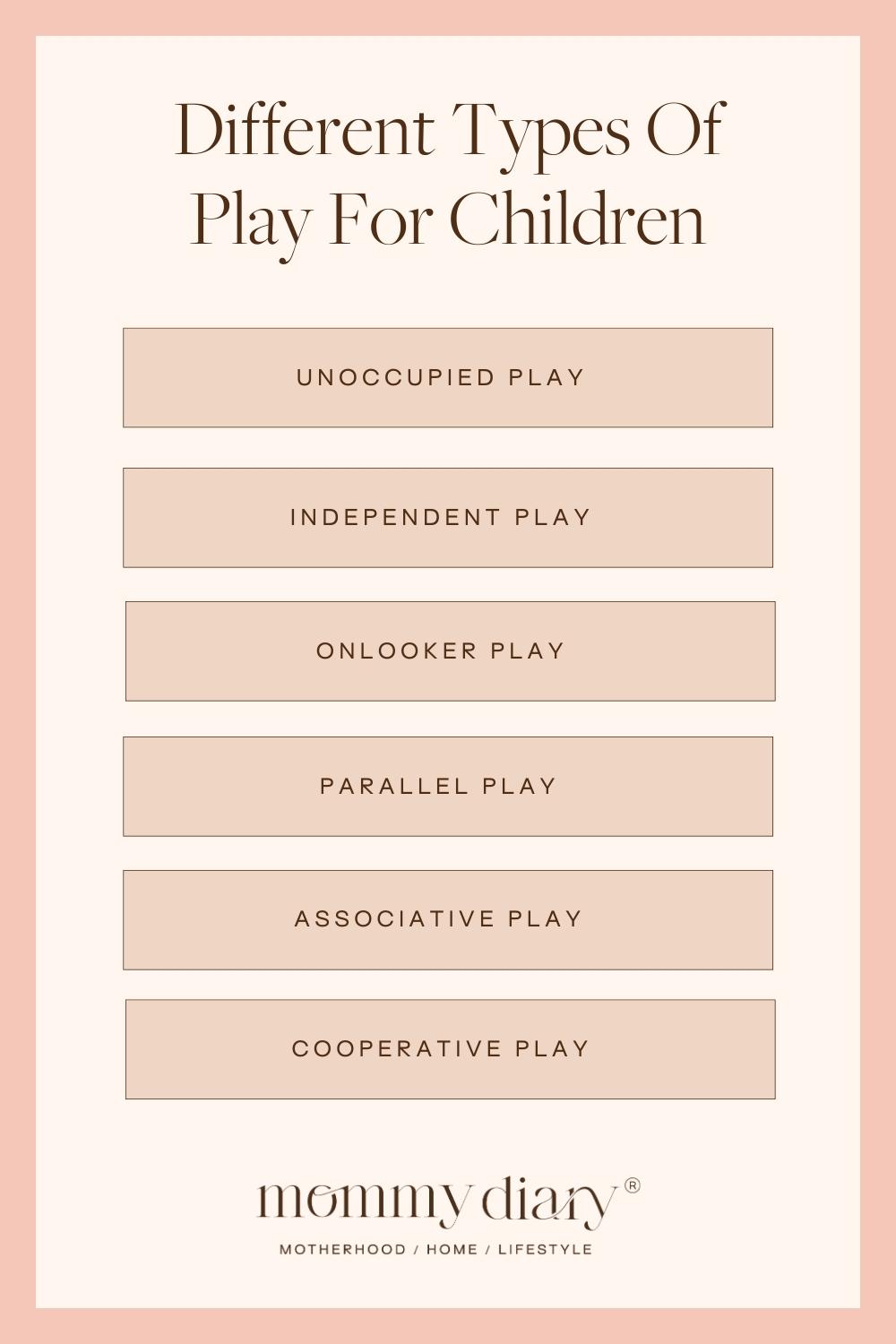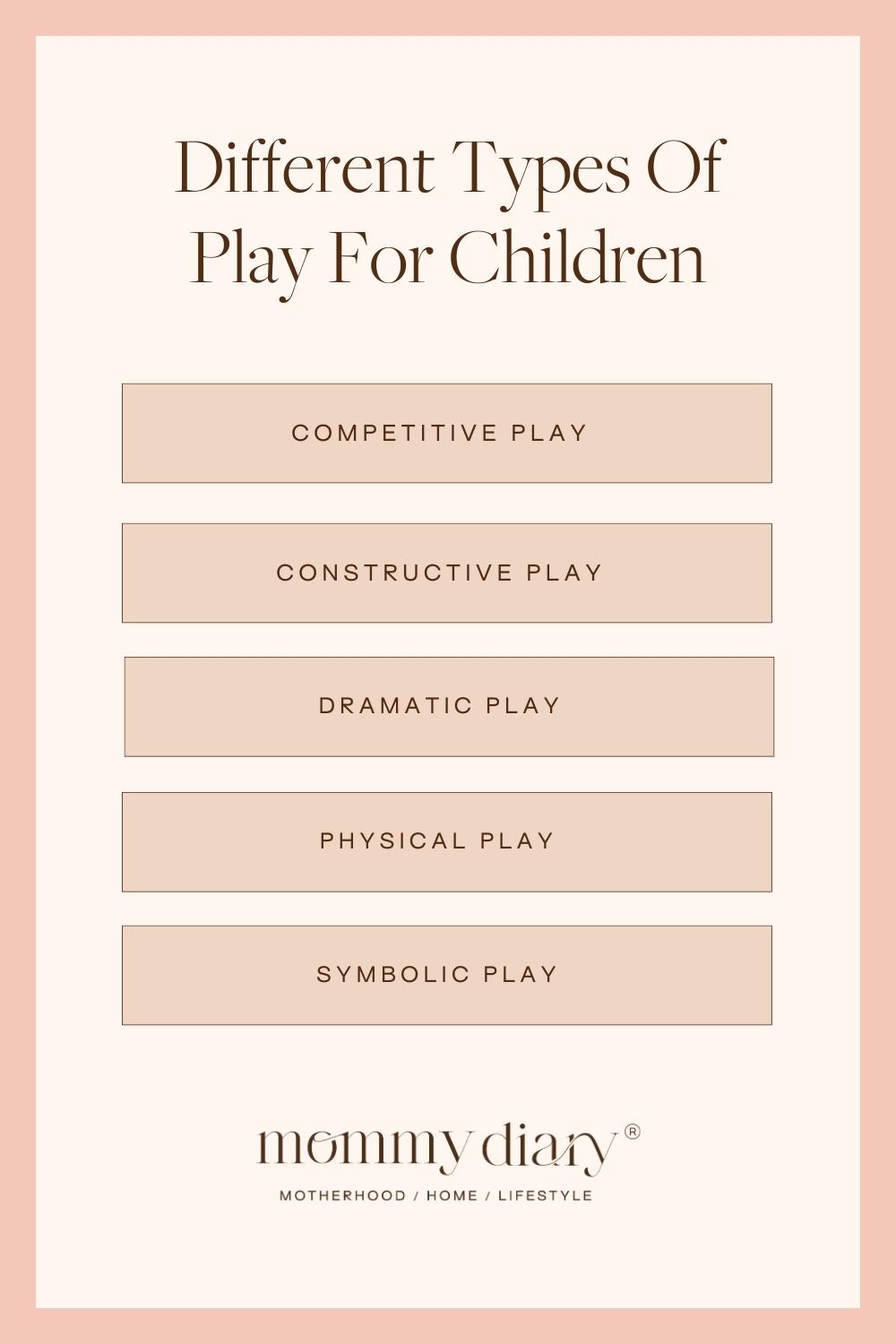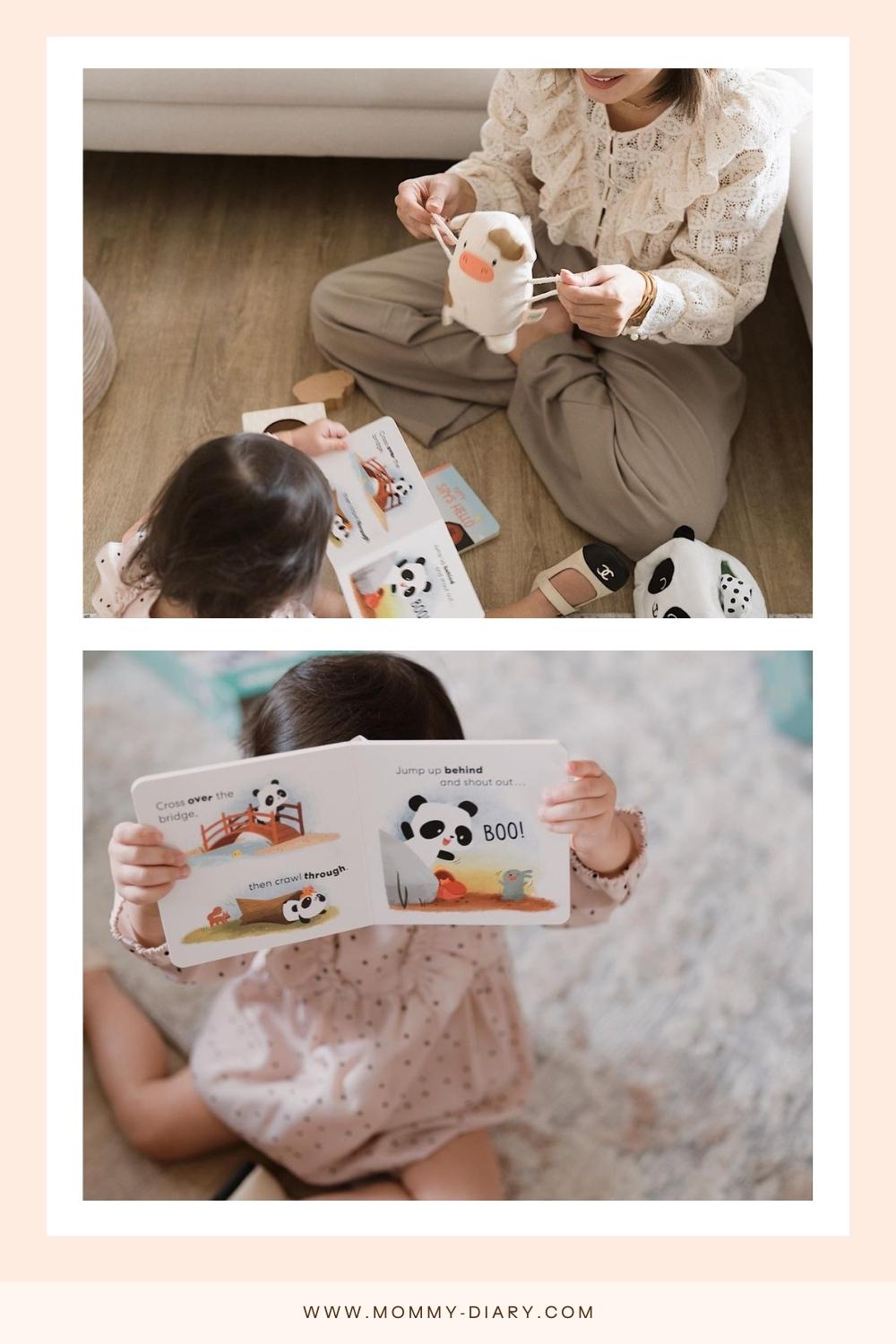Play is so much more than just a fun activity that kids do to entertain themselves. It’s also vital to a child’s growth and development. Play is essential for helping children learn and develop important skills and values that they’ll need as they grow. Plus, children need different types of play to encourage meaningful learning opportunities and mold them into well-rounded individuals in the future.
As a mom, I love watching my kids partake in various types of play. Not only because I know my kids are having fun, but also because each stage of play ensures my child develops important skills that will help them later in life.
Here are 11 different types of play for children.
11 Different Types Of Play For Children

Unoccupied Play
The first form of play is unoccupied play. Newborns, aged 1 to 3 months, will take part in unoccupied play. Ironically, this kind of play doesn’t really look like play, but it’s important for learning to play later on. (If you’re a new mom looking for more advice as you navigate motherhood, check out this episode of my podcast!)
Unoccupied play involves your little one observing their surroundings or making random movements. You don’t necessarily have to do anything special to encourage this kind of play, since babies do it instinctively. However, it’s important to provide babies with the opportunity for exploration. To do this, simply lie them down on a playmat. You could also use an activity gym, but it’s not required for unoccupied play.
Independent Play
Independent play, or solitary play, is most important for kids between the ages of 1 and 3. This kind of play is exactly what it sounds like your child playing alone. Independent play is important because it teaches kids how to keep themselves entertained, which is crucial to being self-sufficient later on.
Bear in mind that as your child gets older, they might continue to engage in independent play, even after learning how to play with others, because it gives them opportunities to explore things on their own.
You can encourage independent play by giving your little one anything they can play with on their own. This adorable Find and Match Easter Matching Eggs toy or this Educational Carrot Harvest Toy are perfect for independent play.
Onlooker Play
Onlooker play is a type of play that is typical for toddlers around the age of 2 or 3. This form of play involves your child watching others play without partaking in the play themselves. It might be hard to see the benefits of this kind of play, but it’s especially important for young children learning to play and interact with others.
Parallel Play
Parallel play is similar to onlooker play but instead of simply watching another child, your child is playing alongside them. To an onlooker, it looks like children playing side-by-side, but not together.
Parallel play is common among kids ages 2 to 3. It’s a good indication that your child is learning to play and interact with others, but they’re not quite ready yet. Some great toys to encourage parallel play include Soft Building Baby Blocks or sandboxes. You can also lay out several children’s books for them to read side-by-side. Just make sure there’s enough to go around since toddlers notoriously don’t like to share.
Associative Play
Kids around the age of 3 or 4 start to become interested in what the people around them are doing. As they start to interact with their peers, they’ll still want to play mostly on their own. Basically, associative play involves children doing the same things around each other, but not with each other.
Associative play is different than parallel play because children are playing separately, but they’re still involved in what others are doing.
Cooperative Play
Cooperative play is a crucial kind of social play. This kind of play involves all of the stages coming together so that children actually begin to play with each other.
Cooperative play is usually the most common type of play among kids ages 4 and 5, or in children who have spent a lot of time with other children. For this form of play, your child begins to use the social skills they developed in other types of play. Here are some fun activities to teach social skills at home!

Competitive Play
Competitive play is crucial to a child’s social development. As the name suggests, this kind of play involves organized activities with winners and rules, like sports and board games.
Through competitive play, children learn about teamwork, sportsmanship, and emotional regulation, as well as how to take turns, follow rules, and deal with failure. These are all incredibly important lessons that your kid needs to learn as they grow up.
Constructive Play
Constructive play is a very hands-on kind of play. Through constructive play, kids learn how to create something in an organized way. This type of play teaches children important skills like persistence, creativity, planning, and logical thinking. Plus, it encourages natural curiosity.
To encourage constructive play, give your kids things that they can use to build or create, like these STEM Master Building Toys or these MAGNA-TILES.
Dramatic Play
Dramatic play is the kind of play that’s probably easiest to recognize. With dramatic play, kids learn how to role-play or pretend, by using their imagination. Plus, dramatic play encourages children to share and take turns, while also supporting language development.
A few of my favorite toys for dramatic play include:
- Wooden Doctor Kit For Kids
- GO GLAM Nail Salon
- Kitchen Pretend Play Toys
- KidKraft Vintage Wooden Play Kitchen
Physical Play
Physical play is another crucial kind of play. This kind of play requires your kids to be physically active, but not necessarily in a competitive setting. Physical play supports gross and fine motor skills, as well as good physical fitness.
Some great examples of physical play include kicking a soccer ball, dancing to music, or riding a bike.
Symbolic Play
Symbolic play encourages children to express themselves through a creative outlet, which allows them to process their emotions and ideas. Some great examples of symbolic play include singing, telling jokes, making music, coloring, and drawing.
I like to encourage symbolic play with my kids using this AWOKE Silicone Painting Mat and these mess-free Crayola Twistables Crayons. If you’re wondering what to do with all the wonderful artwork your child creates, check out this post!

Play is an important part of a child’s development.
I hope you found this breakdown of the different types of play helpful! Encouraging different kinds of play as your child grows is a great way to help them develop important skills and learn important values. Your child will exhibit many different kinds of play on their own, but you might need to encourage them to participate in other types of play. Overall I like to think when kids are playing, kids are learning. So I’ll leave you with this: keep encouraging play!
For more parenting tips and ideas, including tips on how to get siblings to play together and the best books for teaching kids empathy, head over to the blog.


One thought on “11 Different Types Of Play For Children”